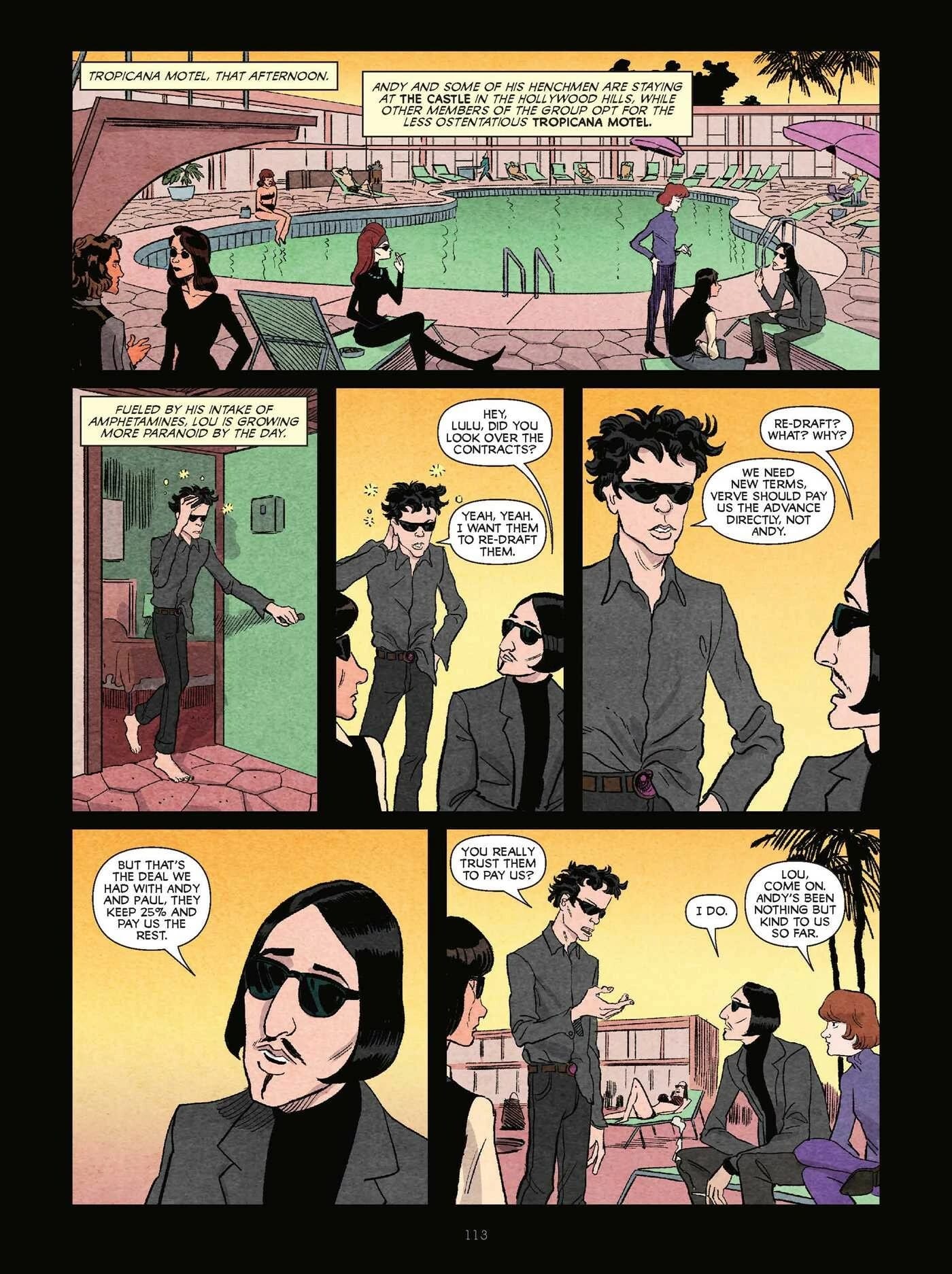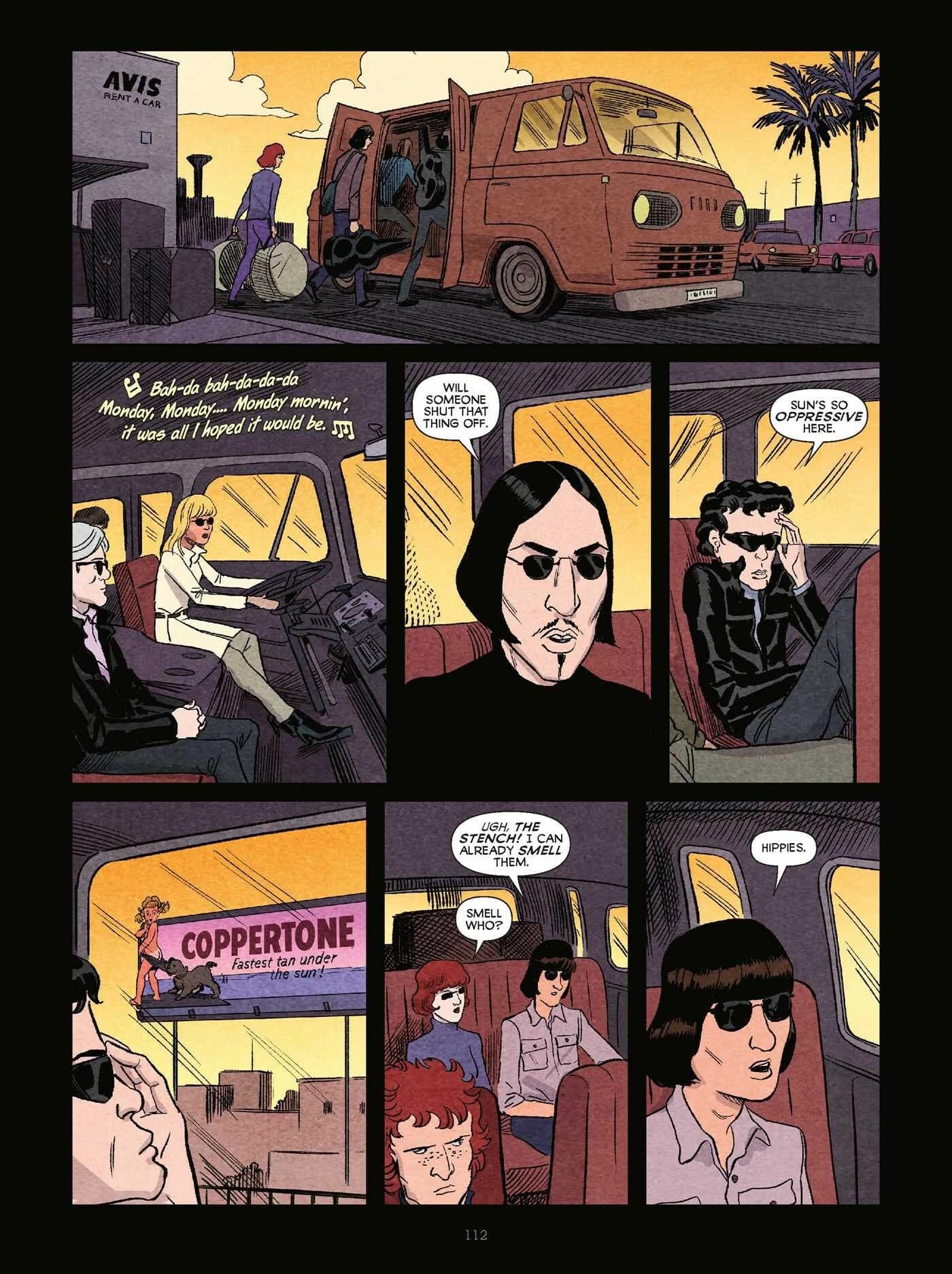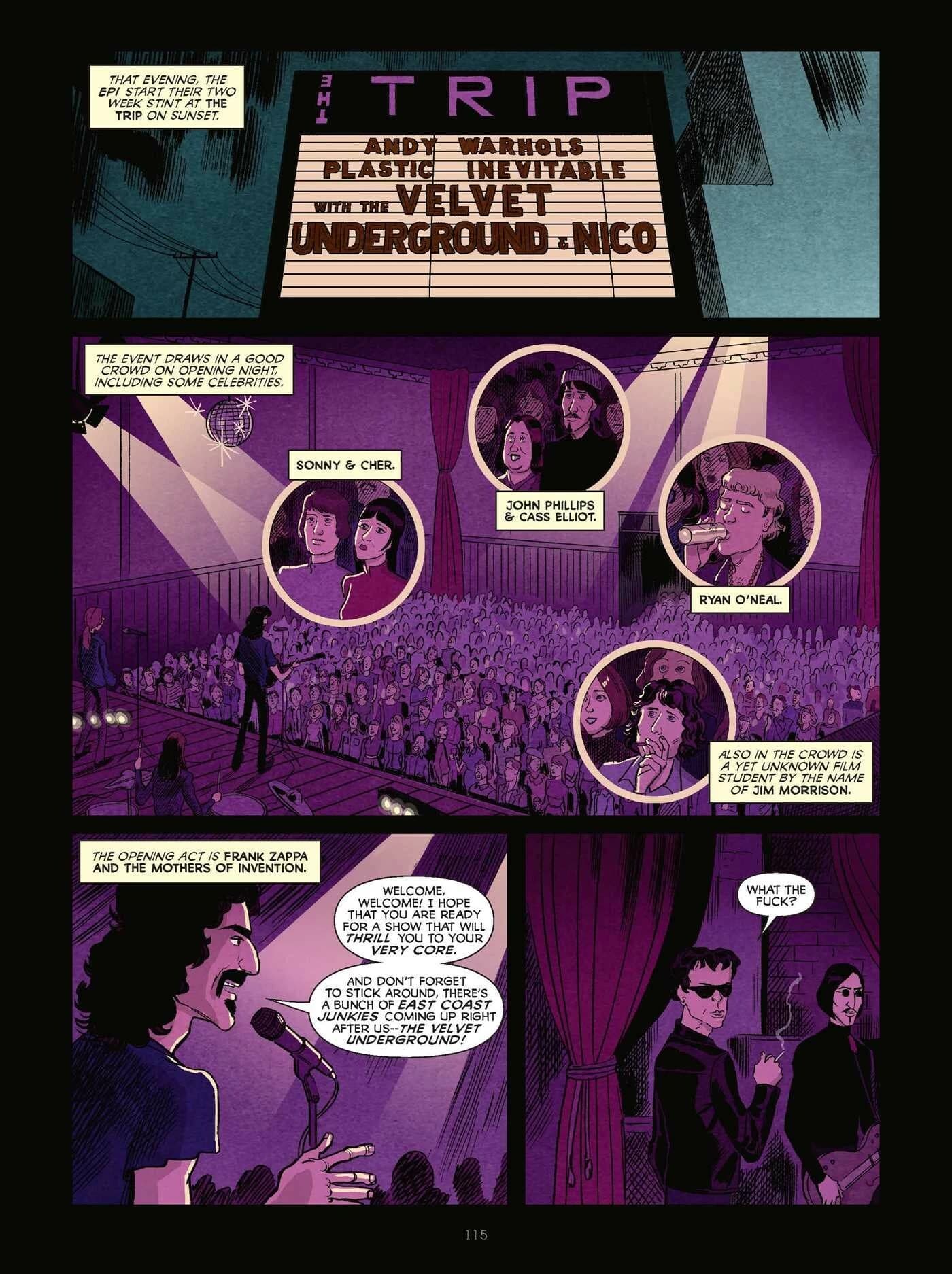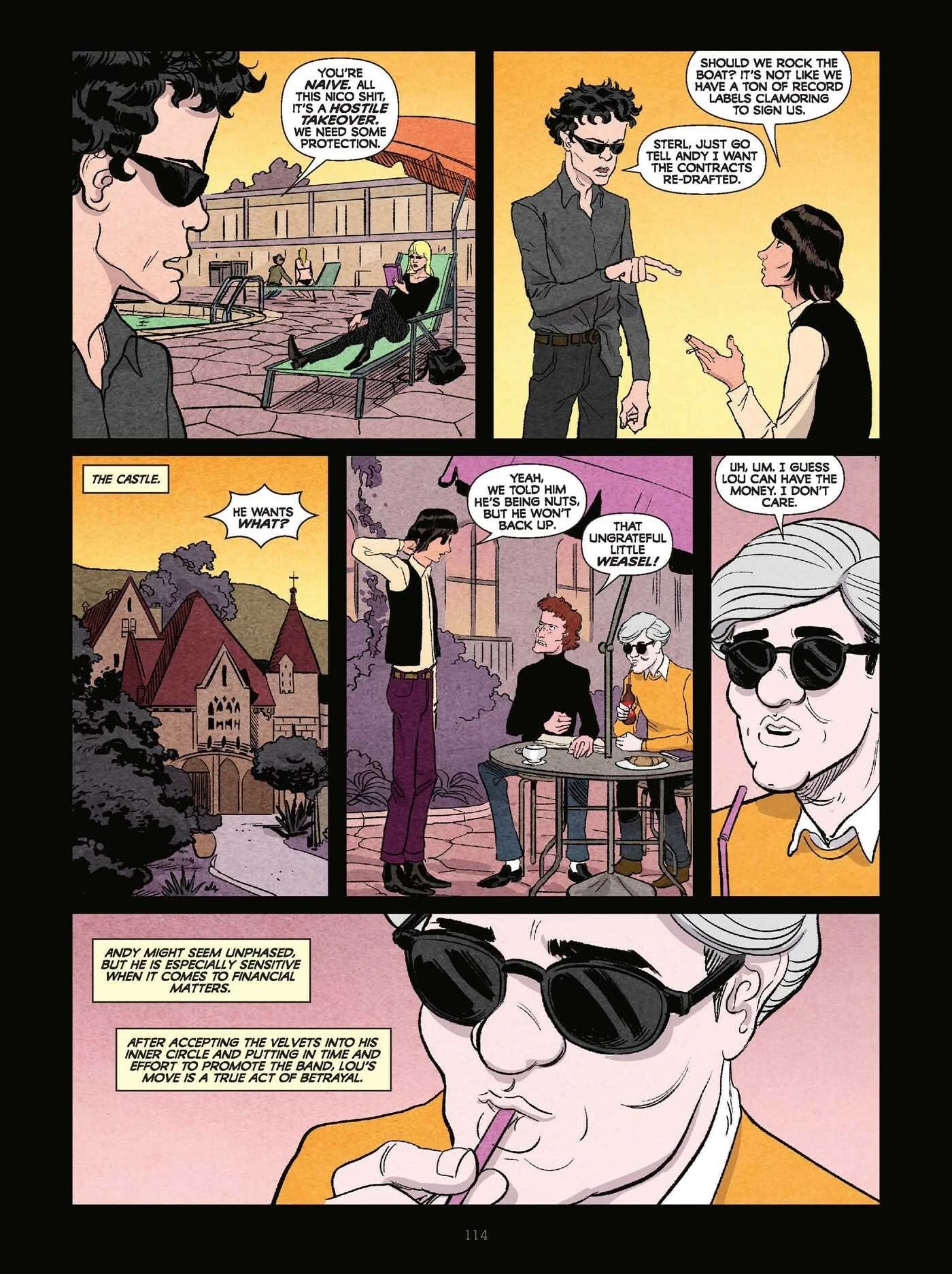Shadmi dives into the origin story of the art-punk band that Warhol helped make famous.
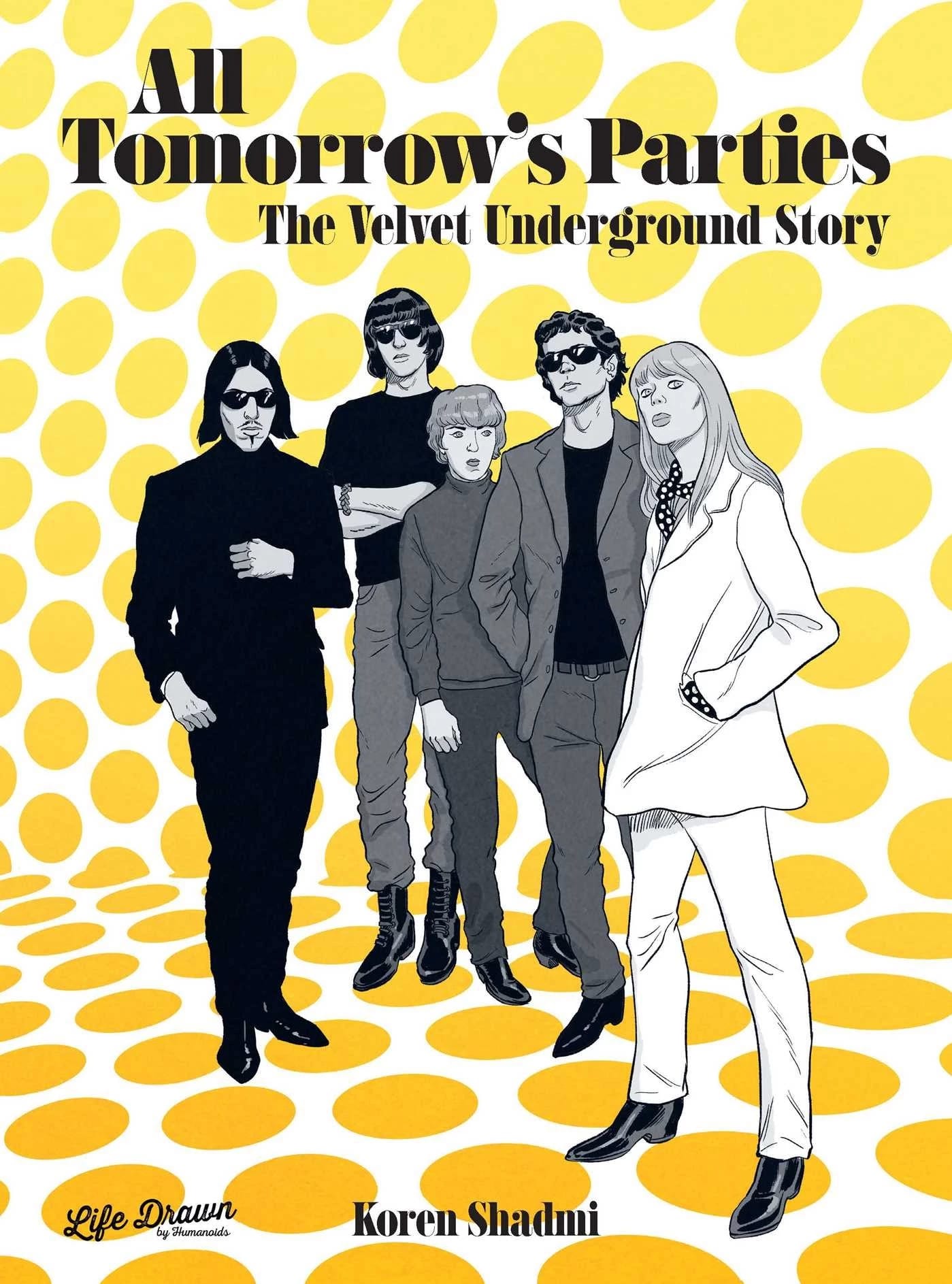
The cover of All Tomorrow's Parties: The Velvet Underground Story by SVA faculty and alumnus Koren Shadmi (BFA 2006 Illustration).
An oft-repeated line about the Velvet Underground says volumes about their influence and importance. To paraphrase renowned music producer Brian Eno, the Velvet Underground only sold a few thousand records in their heyday, but everyone who bought one started a band. Indeed, the Velvet Underground launched the career of Lou Reed, Nico and John Cale, but the band was given a big co-signing lift by art world superstar Andy Warhol, who knew a thing or two about media and publicizing festivities and happenings, dubbing their concerts as “Exploding Plastic Inevitable Now” events.
The VU’s sex, drugs, rock n’ roll and art world crossover story has long fascinated music critics, aficionados and art connoisseurs, and the latest to find himself under their spell is BFA Illustration faculty member and alumnus Koren Shadmi (BFA 2006 Illustration). The author of several celebrated graphic novels and books that he wrote and illustrated—Lugosi: The Rise and Fall of Hollywood’s Dracula, A For Anonymous, Bionic and The Twilight Man: Rod Serling and the Birth of Television, to name just a few—Shadmi’s latest illustrated biographical deep-dive is All Tomorrow’s Parties: The Velvet Underground Story, published this week via LifeDrawn, distributed by Simon and Schuster.
Shadmi is an award-winning illustrator and cartoonist and has contributed illustrations and comics to The New York Times, The New Yorker, The Wall Street Journal, Newsweek, BusinessWeek, Playboy, Mother Jones, The Washington Post, The Boston Globe, Wired and others. We spoke to the author and illustrator about his new book and his long-running fascination with the band’s music.
Why the Velvet Underground? What does the band mean to you?
I discovered the band in my early twenties and they’ve always played an important part in my personal music pantheon. When I was looking for a story for my next book, I started researching bands and musicians with exciting stories. The Velvets are unique because they stand at a junction between music and art, having Andy Warhol as their manager. They are also a reflection of the gritty side of New York in the ’60s. They are one of the most quintessential New York bands and are considered the godfathers of punk. All these elements helped convince me that my next book should be about them.
What was your initial pitch?
Luckily, having done two books with the publisher, Humanoids (the company behind Life Drawn), I didn’t have to work too hard to sell the idea. The publisher asked me what I wanted to do for my next book; I sent them a few options, all of which they liked, and they told me to pick my personal favorite—which was The Velvet Underground idea. I wrote a rough synopsis from what I could gather online before I dived into the serious research.
Some of these Velvets and Lou Reed stories are legendary, but we’ve never actually seen them. Was it fun to visualize them and bring them to life?
I’m a fan of the band, but I was never deeply familiar with their full origin story and didn’t know much about Lou Reed or John Cale, for that matter. It was incredibly interesting to take a deep dive and find out all the stories and think of a way to visualize them and tie them all together into a compelling narrative. It was fun but also challenging since this is an ensemble piece with so many characters.
Which story or part of this book was your favorite to bring to life?
I really enjoyed writing and drawing the band’s first visit to California; they stand in such contrast to the vibes of the groovy ’60s west coast. They are all dressed in black, smoking cigarettes with Warhol’s crew, next to people sunning themselves at the pool. It’s funny and shows how ahead of their time they were. Most bands were peddling the peace-love hippy message. And here we have this group of junkies singing about heroin and transvestites.
Were there any parts of the VU/Andy Warhol story that you felt you needed to emphasize more than the known narratives about them?
Well, at first, I thought I would focus on the question, “Could we have made it without Warhol?” but when I dived deeper into the story, I realized the relationship was complex. At the end of the day, Warhol gave the group their start; he pulled them under his wing and gave them confidence and support.
What were the biggest challenges of the book?
Definitely the amount of visual detail and the fact that there was an ensemble cast, meaning lots of likenesses. Five band members, Warhol and his crew. That’s a lot of people to try and make look like themselves. I also had a hell of a time drawing guitars. They are just as hard to draw as cars!
What was your biggest goal and aspiration with this book?
I wanted to expose the reader to these really unique individuals that were part of the band, especially Reed and Cale, and their collaborative and sometimes contentious relationship. I also wanted to convey how unique that moment in time was, ’60s New York, pop art, the Warhol Factory; you can’t think of a better backdrop for your story, so I just wanted to make sure I did justice to it all and everything was accurate and felt real. At the end of the day, I want people to read the book and enjoy it and maybe learn a thing or two about the Velvets and Warhol.


